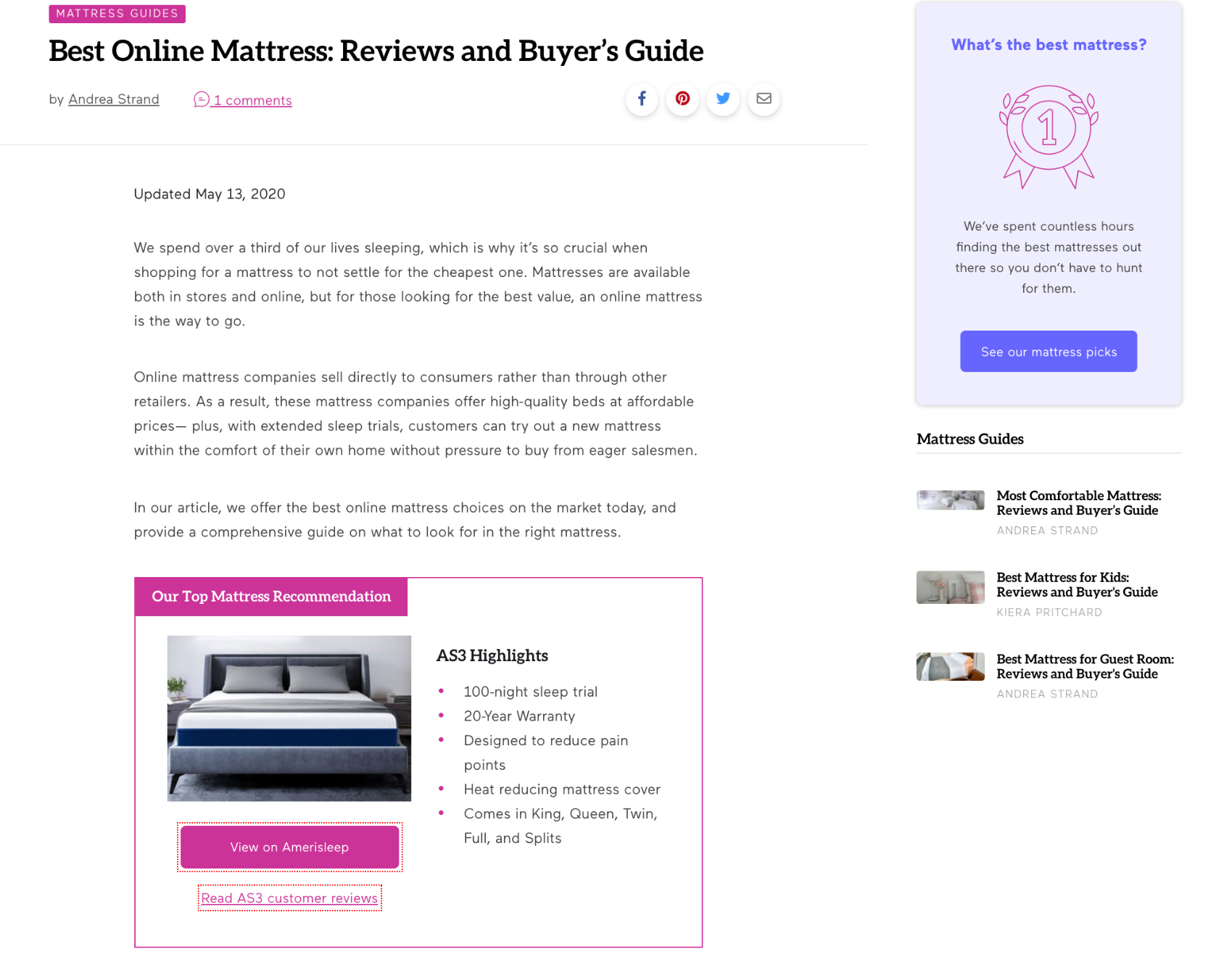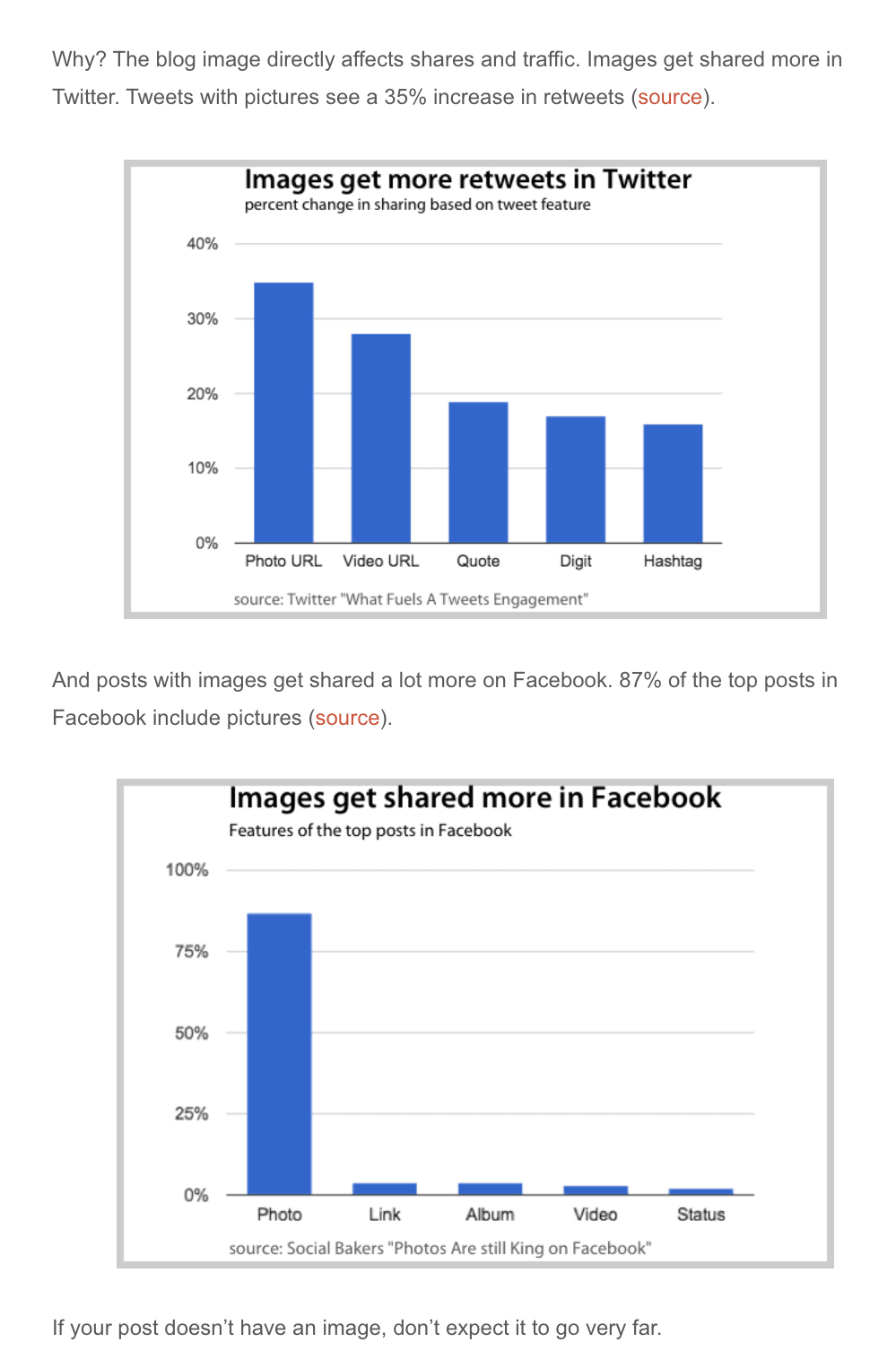
If you are a small business, chances are you have a website. And if you have a website, chances are you also have a blog. And if you have a blog, you most likely publish something on it every so often. Every day, every week, every month, posts go up on your blog.
When writing these blog posts (or having someone write them), you are investing valuable resources: time, money, knowledge, creativity.
But how many of these blog posts bring in actual revenue? Do you track their performance in terms of lead generation? How many of these leads have converted?
To paraphrase Tim Soulo of Ahrefs from his Blogging for Business course: if your blog is not bringing you business, itʼs not doing its job well.
And if you are now thinking that turning a blog into a revenue stream will be a challenge, you are right. It will take some work – but the amount of work you’ll be investing in purposeful and valuable content creation will not outmatch the amount of work you are already pouring into it. It will just be more targeted and more focused.
Let’s explore how you can turn your blog into a steady stream of revenue for your small business.
Know your audience
The first mistake most bloggers (i.e., small business owners) make is writing about the things they find interesting rather than writing about the things their audience finds interesting.
This means you first need to define your audience: who are your buyers, your potential leads? What is it they are looking for? How does your product or service solve their problems? How are they finding you? How are they interacting with you? What do they look for online? How can you jump in there?
Once you know what these people need, you can start providing.
The first rule of content marketing is (or if it’s not, it should be): don’t write a post no one will want to read.
Coming up with the next great idea for a post shouldn’t just be about sitting down with a cup of coffee and brainstorming. That should just be the very beginning of the process.
Once you know who your audience is and what they are interested in, you need to identify the type of content they are looking for, segment it well, match it to the different stages of your sales funnel, and only then start producing it.
Top 6 Tools for Content Marketing Analytics: Features, Pitfalls, and Benefits for Businesses
There is a lot of research and a lot of analysis involved in producing content that converts. It’s not just about creative talent (although, admittedly, talent will take you further than a lack of it ever can). Make sure you are using the right analytics tools to help you analyze behaviors and patterns, that you will then use to inform your content creation.
Provide relevant and valuable insight
The second rule of content marketing should be: if there is no value in it, don’t post it.
The internet is full to the very brim with content that serves no actual purpose. These are all those articles you come across that have been published simply for the sake of getting published. Someone said you’ll be better off the more content you post, and people took heed.
At some point though, search engines have become smarter and they are now prioritizing relevance and value above anything else. Or at least, that’s how they are supposed to be working.
What is relevant and valuable content? That is the question we need to answer here now, isn’t it?
Relevance means several things.
First of all, your content should match user intent. For example, if someone types “review of specific product” into their search engine, they clearly don’t want to see a sales page. They want to see a review they can trust and that will help them make a buying decision. Once they have made their decision, they’ll look for a sales page. Yours, for example, if they are already on your blog and you have just managed to solve their “which product should I buy” dilemma.
If you are trying to shove your product page under the noses of these people, you won’t be matching their intent.
You also need to make sure you are targeting the right stage of the sales funnel. People looking for “beginner’s guide” will likely not be advanced users of a product or service, so the way you speak to them can’t be the same as the way you would speak to an expert. Tailor your choice of words and your tone of voice accordingly.
Here is an example to help you out. This post from Aura about Amazon FBA shipment is just what it claims to be: a step-by-step guide. It has clearly defined actions one needs to take, it has appropriate imagery to accompany the guide, and it is speaking in a language a user who has never done something like it before will understand.
The same post can serve to illustrate the importance of value.
Value means providing actual information, being of some use to the people who are reading your post. If you just blabber on for 1000 words without ever coming to the point, there will be no value there.
Yes, there is a segment of internet users who read online for the entertainment factor. But most people look for answers online. Your job is to find the questions they are asking, and provide relevant, valuable, and actionable answers.
Do extensive keyword research
Another common mistake is not working with the right keywords.
In short, you need to write blog posts people will see, in order to first attract visitors, then move them into the lead category before you finally convert them. And when we say people, we mean your target audience – people who have never seen them before. When you promote a blog to your existing audience, you are not driving new sales. And the way to do that is to be found online.
To make yourself visible to a wider audience, you will need to find keywords you can rank for. A tool like Ahrefs can be of great use here. It can help you identify keywords your target audience might be typing into their search bars, that there is not a lot of competition for, and that you can write a decent blog post for. Then you need to make sure that this post ranks at the top (by building backlinks to it), and then you can expect to see some new visitors.
This will not be an easy task. While it is essentially simple, and involves a lot of trial and error, it will take time and it will not always be easy to manage.
Don’t forget that your posts need to be in line with your brand as well – and don’t publish something just because you can rank for it easily if it has nothing to do with you whatsoever.
Here’s a bit of an anecdotal example (which I am again borrowing from the incredible Tim Soulo). Hubspot has a post on making gifs. A great post – useful, valuable, actionable, informative, like most of their content.
However, how likely will this post convert a visitor? When we know Hubspot sells marketing software, the answer is – not many.
What you need to note here is the difference between your brand and Hubspot, which is a huge company with a very established online presence, a recognizable brand name, and very successful sales avenues.
As a small business, you can’t afford to do the same – i.e., create a post that will drive a lot of traffic, but that will result in zero conversions. Thatʼs why the keywords you select need to allow for conversions and not just traffic.
Don’t aim to publish a lot
Another popular mistake is publishing a lot of content. This can be a pure waste of time and effort.
Instead of publishing a lot, aim to make every blog post you publish top-ranking. This will mean all posts need to be really exceptional and that you need to promote them well. That is simply the only way to truly get noticed.
6 Essential Tips to Enhance Your Business Writing Skills
You can start by working on your writing skills – which will come in handy whatever you choose to do online, as a lot of online communication happens in writing.
You can spend a lot of time reading up on the posts your target audience is reading and sharing (use social media and audience research tools to figure out what these posts are).
You can then start working on your post promotion strategies as well. Remember, you need to get each post as many links as it takes to rank at the top.
Of course, these posts still need to be relevant to your target audience (point 1) and target keywords you can rank for (point 3).
Now that we have these three key facts in mind, let’s look at some examples of good blog posts and how you can learn from them:
Say something your competition doesn’t
A great way to get a post to rank well is to make it very in-depth, but you can’t always do that, especially when discussing different kinds of products.
Here is an example from Each Night that can illustrate how you can write posts about products:
They provide true value to readers by comparing different kinds of mattresses and focus on value rather than making a sale. These kinds of posts will help a visitor determine what they need to buy, and if you have a hand in helping them make a decision, chances are they will stick.
This post covers all the major elements we have discussed: value, matching search intent, speaking in the language of your audience. As a result, it will both be easier to rank (i.e., people will want to link to it as it is a useful resource) and search engines will consider it a page worth ranking high.
Back up your data with research
The one thing we all keep forgetting about the internet is that it is not exactly a reliable place. Anyone can post just about anything just about anywhere, so how is a user to know what they are reading is actually true?
With so much fake news available at every corner, and with so many differing opinions about practically every issue out there, users can often feel overwhelmed and become increasingly mistrustful of everything they read online. This is especially true when it’s a part of a sales tactic.
Your way around this issue is to provide facts that can be checked. There are still some bastions of reliability on the web, and they are mostly scholarly and scientific journals and major names in a certain industry (news websites excluded – even though many people still trust them, the people who write for them don’t always double-check their facts).
By writing posts that are backed up by science and that quote and link to verifiable data, you will be adding to the credibility of your posts, both in the eyes of your readers and search engines.
And don’t think that these kinds of posts have to be boring either. Here is an example from Drink LMNT that shows you how you can make a post interesting while still backing up the facts by linking to multiple scientific studies.
Granted, there will be industries and niches where you can’t rely on science to back you up. But there is most often a way to support your data and add some extra credibility to your words from another trusted source.
Use images
While most blog posts will now feature images, what these images have to add to the text is just as important as the copy itself. Don’t just add images to your content for the sake of adding them. Make sure they add to the post.
This can mean using illustrations, using images of the product you are discussing, adding charts, etc. Make sure to use original images as much as you can, as stock images are available to everyone else and they will not make your page stand out in any specific way.
You can do anything from images with quotes to memes and infographics: this post from Orbit Media covers the points nicely.
Source: orbitmedia.com
Help a visitor out
There is always a way to provide a genuine helping hand to your visitors. They might be struggling to fix something, or do something, or choose something, and if your post can help them out, chances are they will remember and come back or check out your offer there and then.
True, you will need to come up with answers to these potential problems, and you may be stuck for ideas.
Here, however, is an example from Baselang, who have done a great job in explaining a lot of the rules and intricacies of Spanish on their blog. If you were learning Spanish and looking for a quick and easy way to memorize something that may not be summed up in your exercise book, this post will provide the answers.
Teach – even when it’s counterintuitive
As you have already gathered, the main focus of your blog should be providing actual value to your readers, and not just ranking at the top. Because even if you manage to rank a not-so-good article well, it may not drive the revenue you were hoping for, as people won’t bother to read it, let alone take a look at your CTA and click anywhere else.
So, value becomes the main pillar of your content as a revenue-driving tactic.
This might mean you will need to do something completely counterintuitive – like teach people to do something you are hoping to be hired to do yourself.
And while you may think this kind of post will not convert anyone, you’d be surprised how well these posts serve to illustrate your expertise and ensure you get people interested in what you can do for them.
Wrap up
Blogging as a way to generate revenue is an idea every small business has in the back of their mind. But where many fail, you can succeed. You’ll “just” need to devote enough time to your blog and content to craft it and rank it well, making it that extra avenue of revenue you were looking for.
Don’t expect results overnight, either – these things will take time, so don’t give up after having written only a couple of posts. Start thinking of your blog as a marketing channel and keep investing in it. Keep track of progress and the tactics you are employing, and when you notice something is working well, think about new ways to improve it further. When something is not working, move on to a different tactic.
With some trial and error and some well written, expertly promoted blog posts, youʼll start to see that revenue rolling in.







